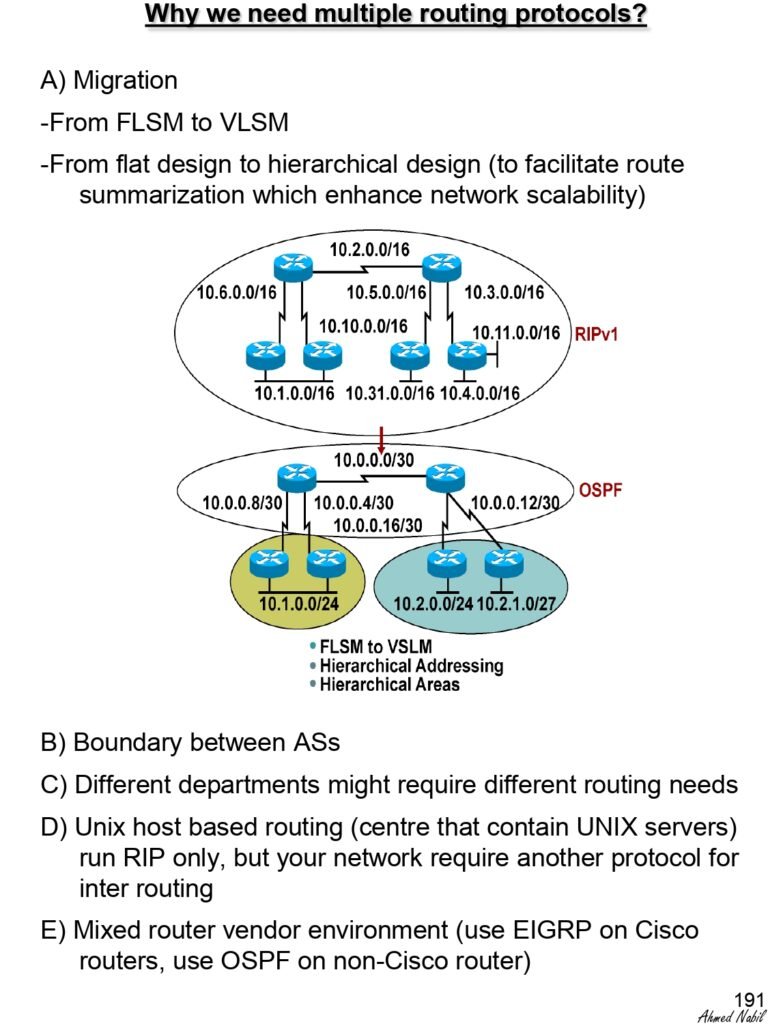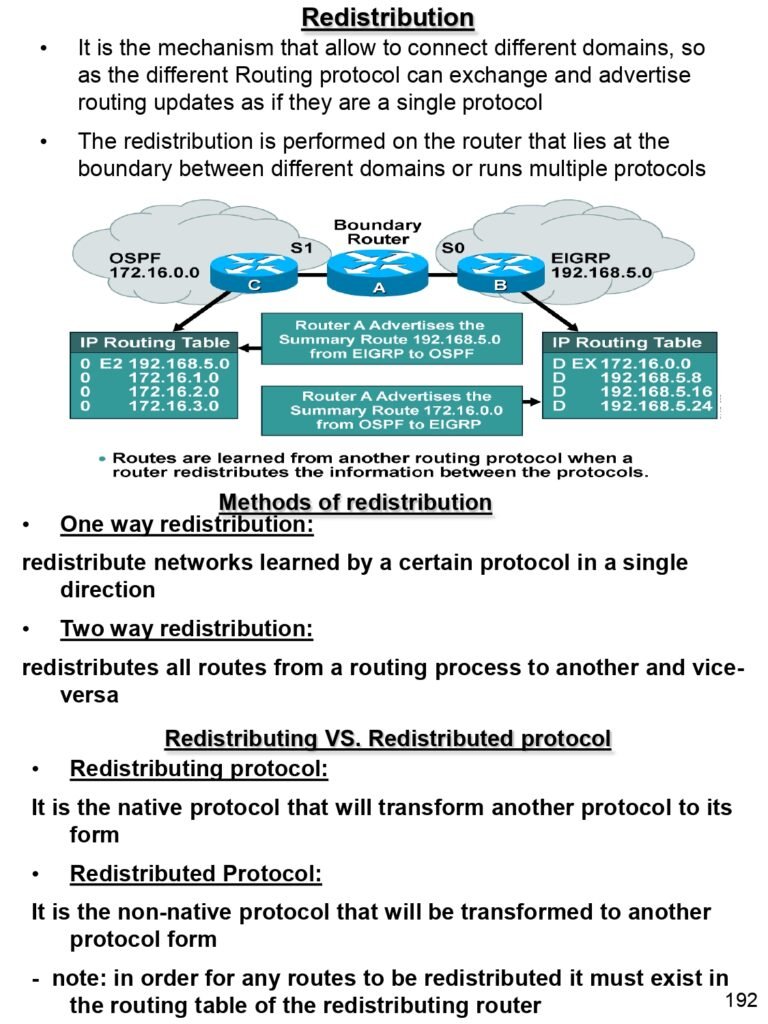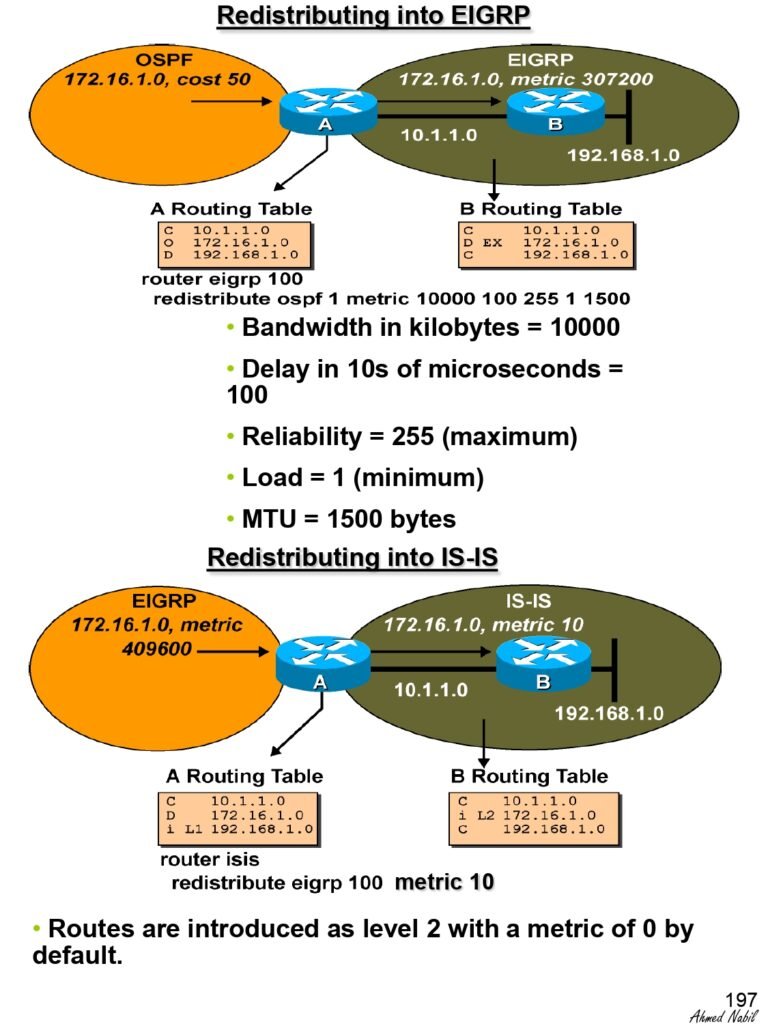Manipulating Multiple Routing Protocols (Redistribution) involves configuring and managing multiple routing protocols in a computer network to achieve efficient and optimal routing of data packets. A routing protocol is a set of rules that determines the path that network traffic takes from its source to its destination.
Different routing protocols have their own advantages and disadvantages, and their behavior can affect network performance. Network administrators may choose to use multiple routing protocols to take advantage of their respective strengths, but this requires careful configuration and management to ensure that they work together effectively.
Manipulating Multiple Routing Protocols requires knowledge of various protocols such as OSPF, BGP, EIGRP, and RIP, as well as their interactions and dependencies in the network.
about the Redistribution Notes:-
The book is a quick and comprehensive summary of Manipulating Multiple Routing Protocols (Redistribution). consisting of 14 pages, in a simple style.









Notes Content: –
- Why we need multiple routing protocols?
- Redistribution
- Methods of redistribution
- Redistributing VS. Redistributed protocol
- Configuring Redistribution
- Redistribution issues
- Default Seed metrics
- Redistributing into RIP
- Redistributing into OSPF
- Redistributing into EIGRP
- Redistributing into IS-IS
- Redistribution Implementation Consideration and problems
- Redistribution Techniques
- IPv6 IGP Redistribution
Prepared By: –
Eng Ahmed Nabil
Notes Format: –
To Download PDF: –
For MPLS PDF handwriting From here
For BGP PDF handwriting from here
